Autumn is the time of year when Ivy comes to life and blooms. Take a closer look at some of the species that feed on its flowers and berries.
While most wildflowers have finished flowering for the year, autumn is the time of year when Ivy comes to life and blooms. Often a victim of bad press, the huge wildlife value of Ivy is under-appreciated. As an abundant and widespread flowering plant across the North East and Britain, Ivy is an invaluable food source for flower-visiting insects. In turn, the berries that are produced provide an important winter food supply for birds.
From late summer through to late autumn, Ivy produces small globes of nectar- and pollen-rich flowers that can occur in their masses. Whilst not the showiest of flowers, hundreds of insects are drawn to Ivy flowers on warmer autumnal days. Flowering late in the year when most wildflowers are no longer in flower, Ivy is an invaluable late-season food source for pollinating insects.
A huge array of species can be observed including butterflies, moths, flies, wasps and bees either foraging on its flowers, basking on its warm leaves, or feeding on the invertebrates visiting it. Ivy also serves as a final bounty for those insects building up their reserves to overwinter, such as queen bumblebees and wasps. Over 70 insect species have been recorded to feed on Ivy flowers in previous studies and this figure is undoubtedly an underestimate.
Other insect species may visit Ivy while in bloom, not for the plant itself, but for the invertebrate prey attracted to the flowers. Many invertebrate species also feed on other parts such as the leaves and buds. The caterpillars of nine butterfly and moth species in the North East feed on Ivy, such as the Holly Blue butterfly and Swallow-tailed Moth.
As forage, shelter and nesting habitat, Ivy supports a wide range of species from invertebrates to birds and larger mammals. As the most abundant and widespread late-flowering plant, Ivy is considered a ‘keystone’ species for flower-visiting insects in the autumn.
Ivy visitors to observe this autumn
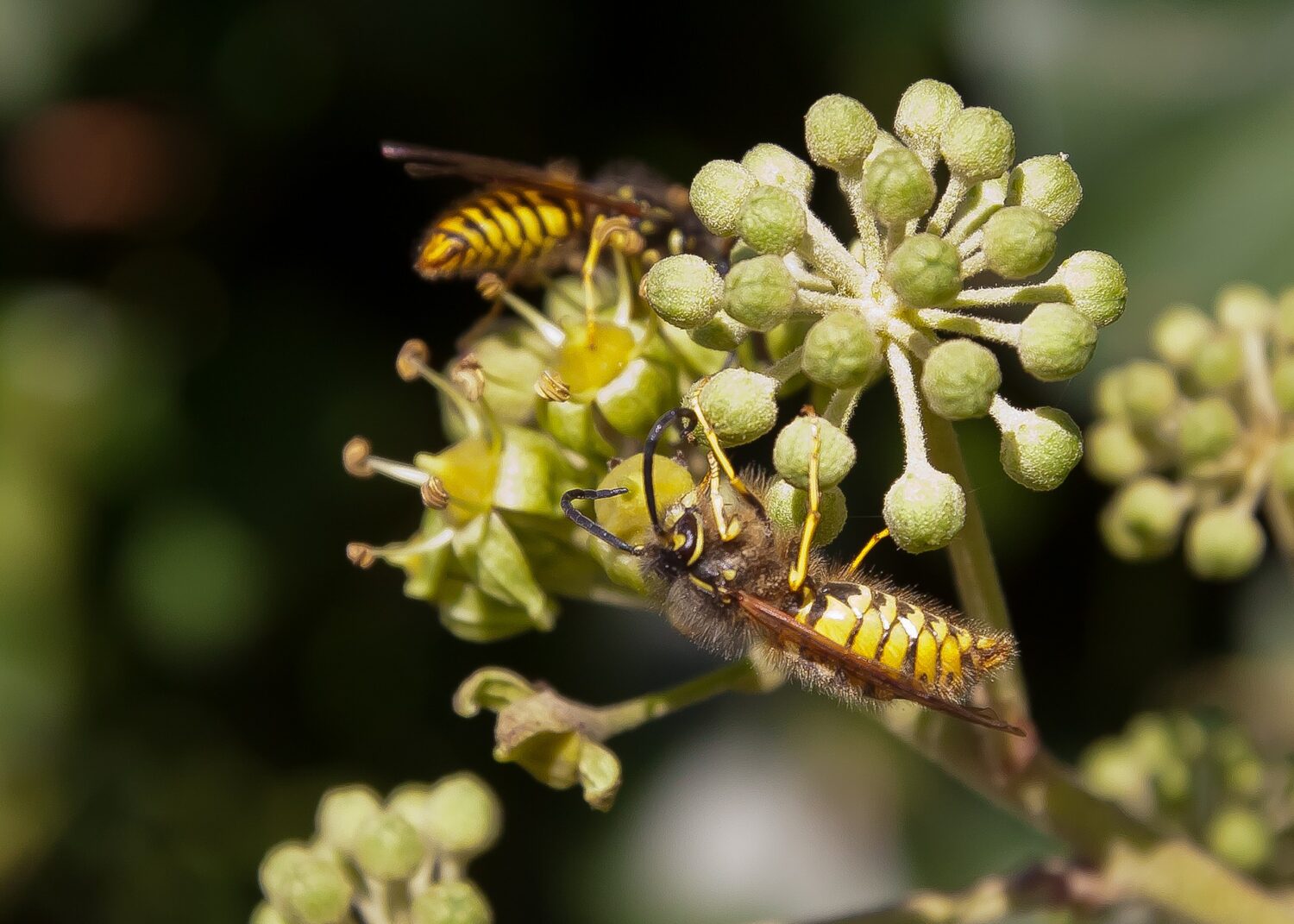
Wasps
Common Wasps (Vespula vulgaris) are generally the most abundant visitors and are considered key pollinators of Ivy.
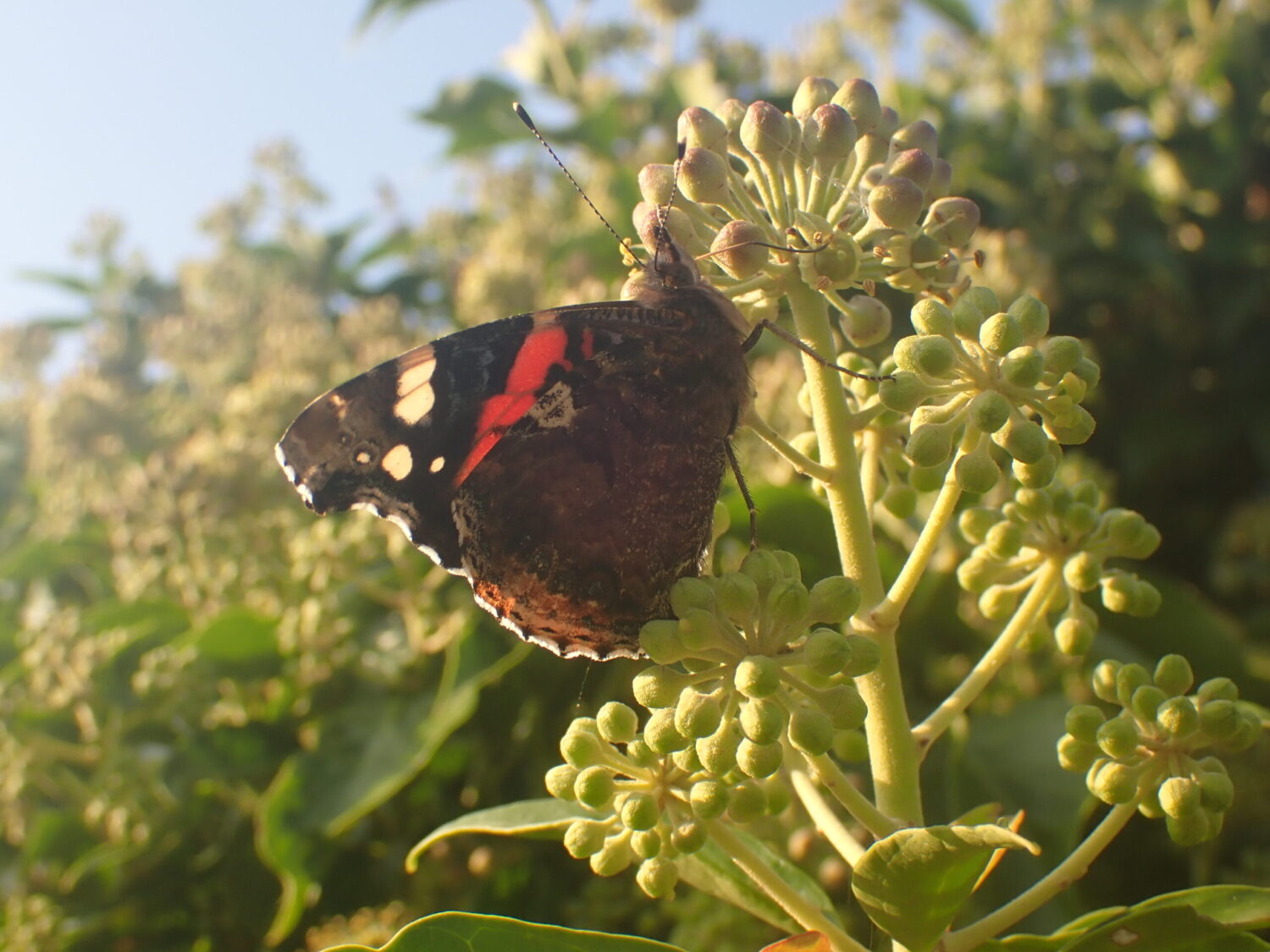
Butterflies and moths
On sunny days, late-season butterflies such as the familiar Red Admiral and Comma can be found nectaring on its flowers.
In the evening, look out for moths visiting its flowers for nectar, such as Angle Shades and other autumnal species.
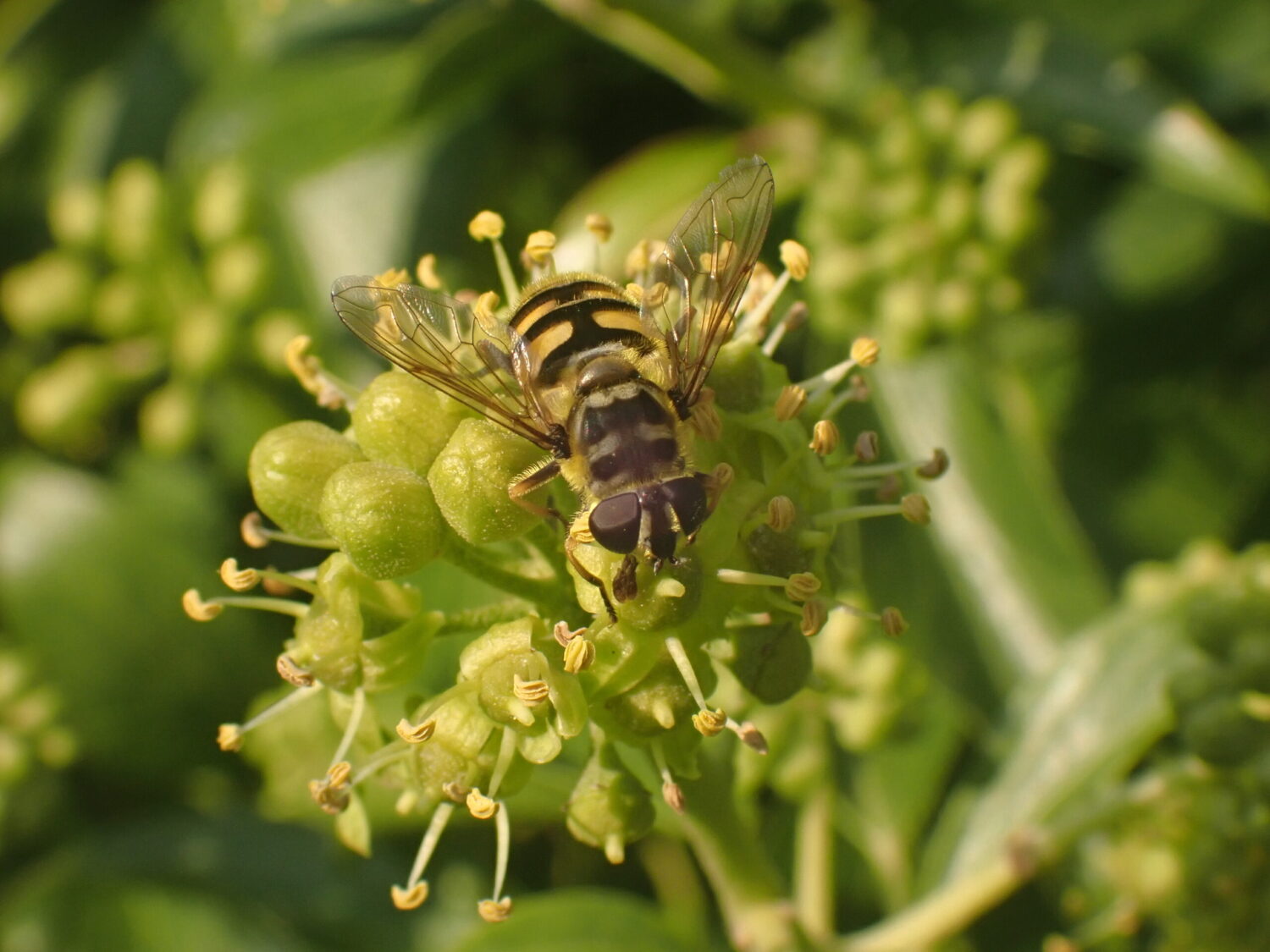
Hoverflies
Over 30 species of hoverfly can be observed feeding on Ivy flowers. The Batman Hoverfly (Myathropa florea) is a particularly abundant visitor, named after the ‘batman logo’ marking on its thorax.
The Hornet Hoverfly (Volucella zonaria), an impressive and uncommon species in the region, can also be observed feeding on its flowers.
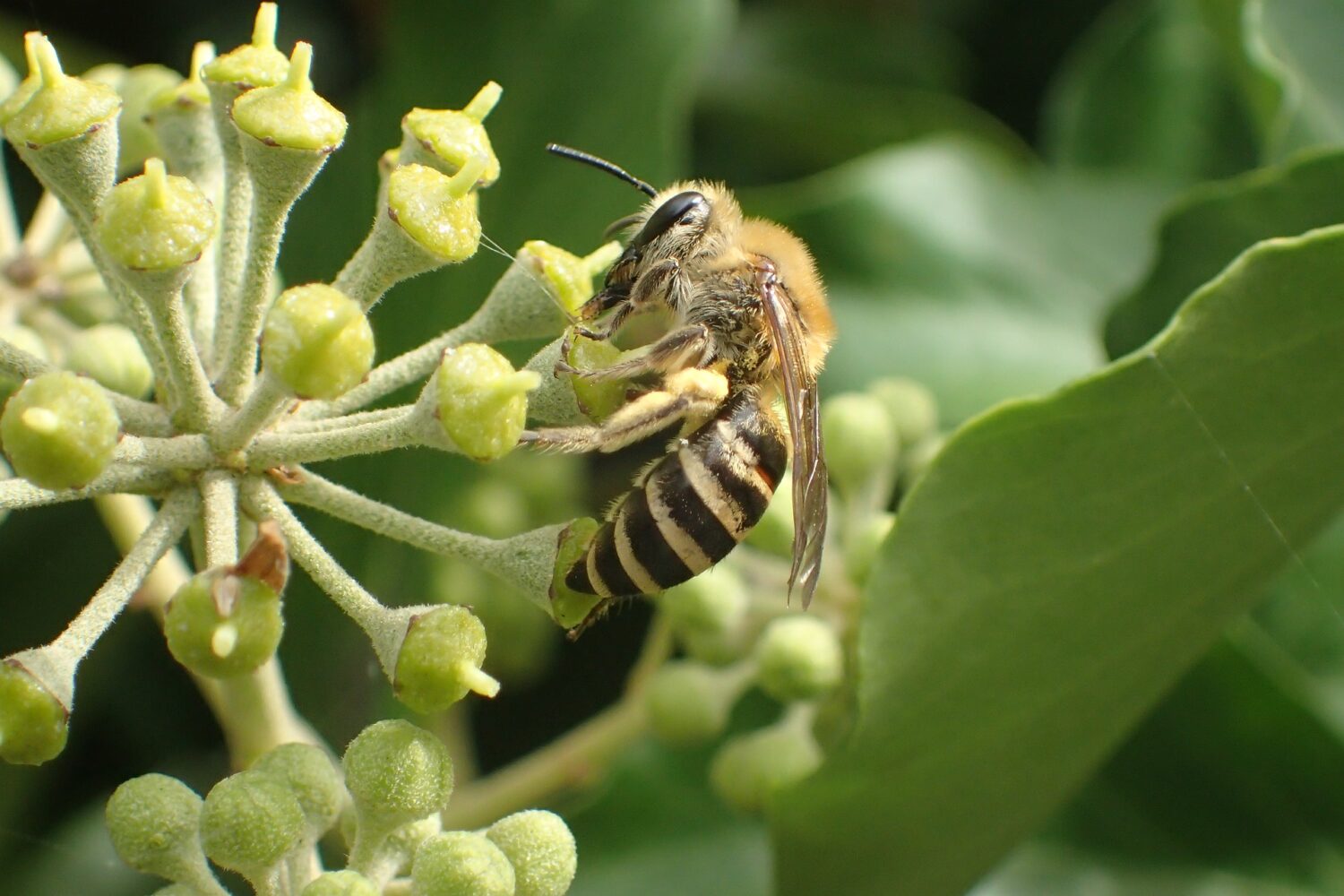
Bees
Honeybees (Apis mellifera) and bumblebees forage on Ivy for both nectar and pollen. Ivy serves as an important final bounty for queen bumblebees as they prepare for winter hibernation.
The Ivy Bee (Colletes hederae), a solitary bee that first arrived in the region in 2019, times its emergence with the flowering of Ivy. With Ivy as its main pollen and nectar source, the availability of Ivy is key to this species’ survival.
The first regional record of the Ivy Bee was from Whitburn (County Durham) in 2019 and is a species that will likely increase its distribution quickly across the region.
Do look out for these gingery, striped bees on Ivy across the North East. If you spot one, please share your sighting to map the spread of this species in the region.
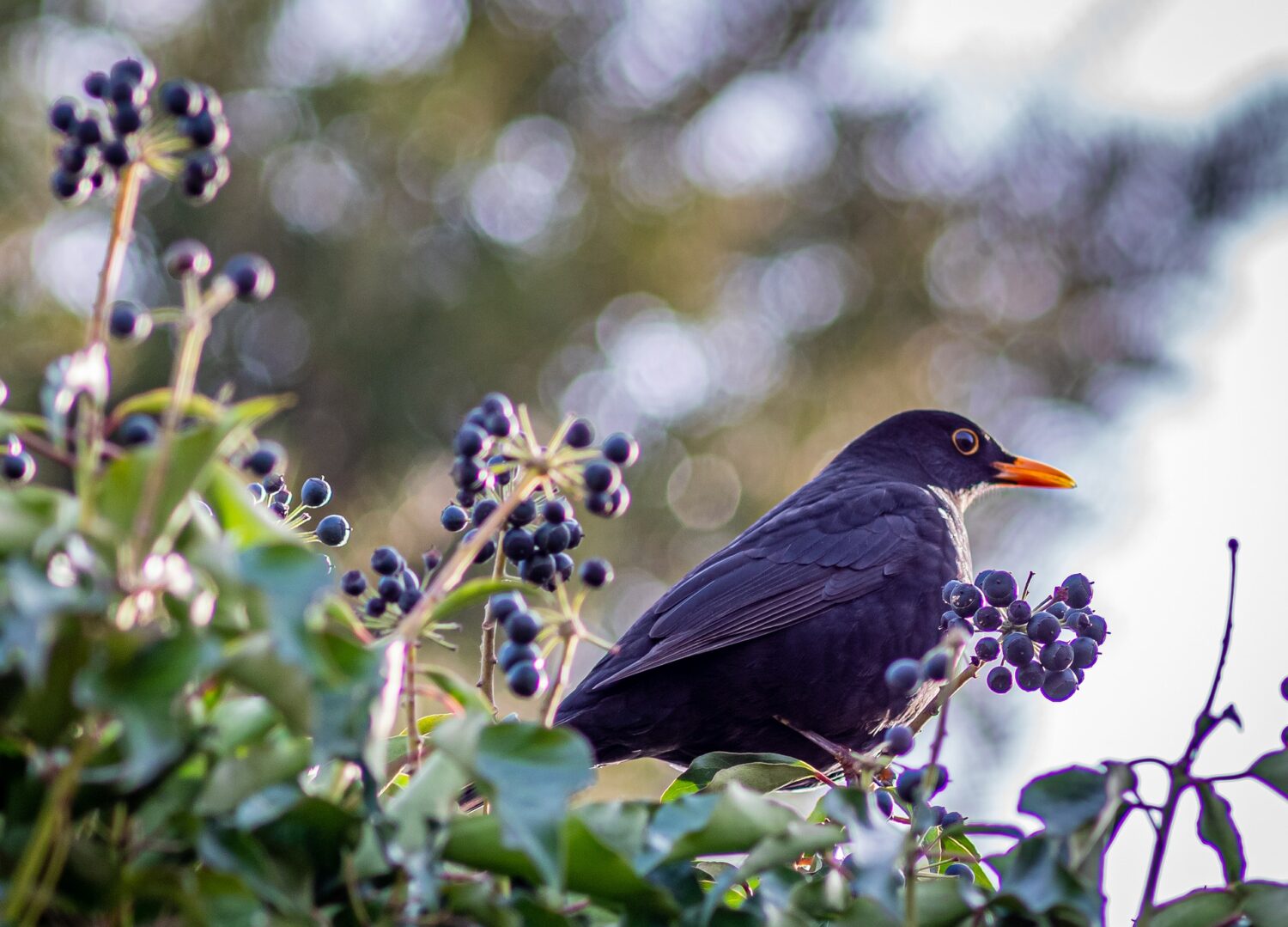
Birds and mammals
As result of insect pollination, Ivy provides berry-laden bushes for birds throughout the winter months. It is not uncommon to hear commotion in ivy bushes as Wood Pigeons clumsily feed on the berries.
At least 15 bird species in Britain are known to feed on its berries. This includes winter-visiting thrushes such as Redwing and Fieldfare.
Even Roe Deer are recorded to feed on its berries alongside its leaves during winter.

Have a sighting to share?
You can help monitor and protect North East nature by sharing your observations.
Submit a sighting today to help track the fortunes of our region’s wildlife. Every record really does count.
You can also share your sightings with us via social media or by email at nhsn@ncl.ac.uk.